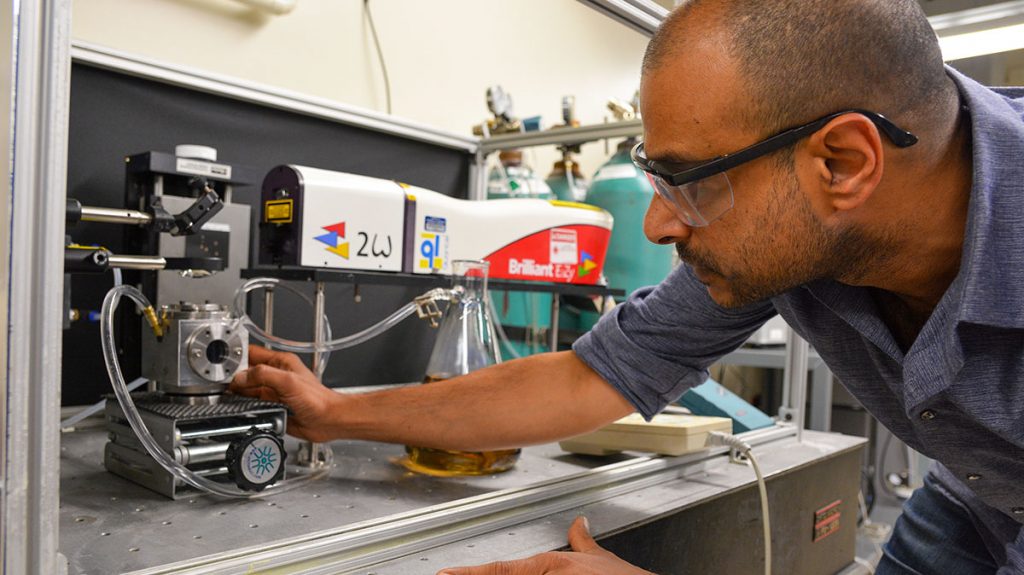
Engineering of Functional and Structural Materials
Functional materials possess native physiochemical properties and are found in all classes of materials, including ceramics, metals, polymers, and organic molecules. Examples include materials that possess catalytic activity, energy storage capability, photovoltaic properties, and a host of materials used in smart coating and thin film technologies.
The overarching theme of research in this area is rational design and development of materials with unique structures, properties, and functions. Topics include nano-scale self-assembly and organization (Guo, Khomami, Kilbey, Stein), nanoparticle and thin film synthesis (Mukherjee, Edwards, Dalhaimer, Guo, Laursen, Khomami), catalyst synthesis and characterization (Laursen, Khomami, Mukherjee, Zawodzinski), development of materials including bio-hybrid for a variety of energy applications (Advincula, Laursen, Khomami, Kilbey, Mukherjee, Stein, Zawodzinski), nanothermite designs for composite joining (Mukherjee). Areas of application include next generation electronics, printed electronics, renewable energy, drug delivery, clean water, and agro-chemicals.
| Faculty Researchers |
|---|
| Rigoberto Advincula |
| Paul Dalhaimer |
| Brian Edwards |
| John Zhanhu Guo |
| Bamin Khomami |
| S. Michael Kilbey II |
| Siris Laursen |
| Dibyendu Mukherjee |
| Gila Stein |
| Thomas Zawodzinski |
Recent News
Going Big and Energetic at a Small Scale Earns Mukherjee DURIP
Research Assistant Professor Dibyendu Mukherjee has developed a new way of producing energetic nanomaterials and received a Defense University Research Instrumentation Program award.
Laursen’s a Catalyst for Change
Associate Professor Siris Laursen’s research using computers to explore possible catalysts at the atomic level has lead to breakthroughs by taking new approaches to science.

